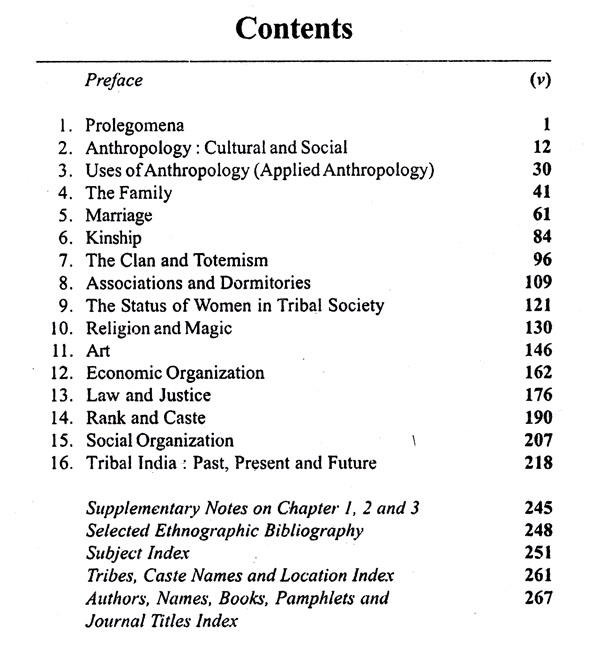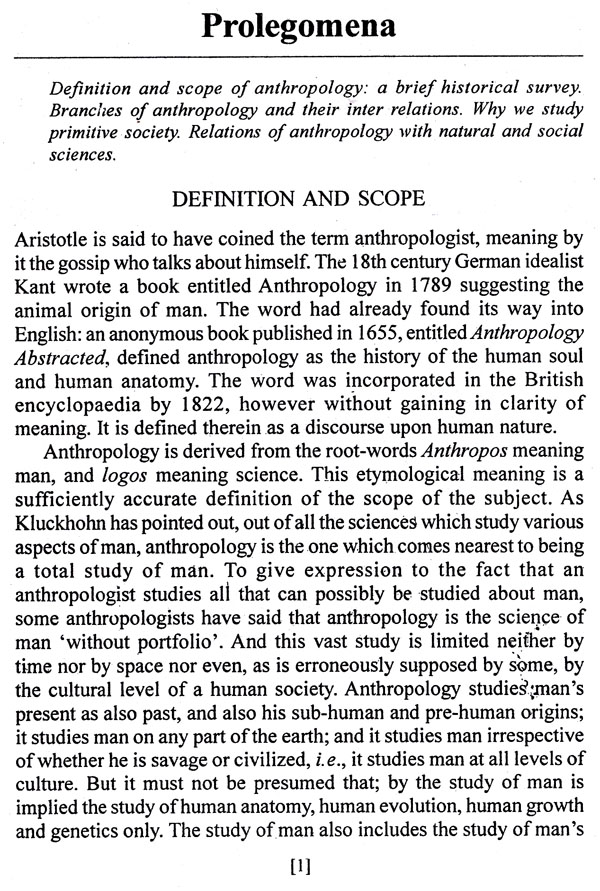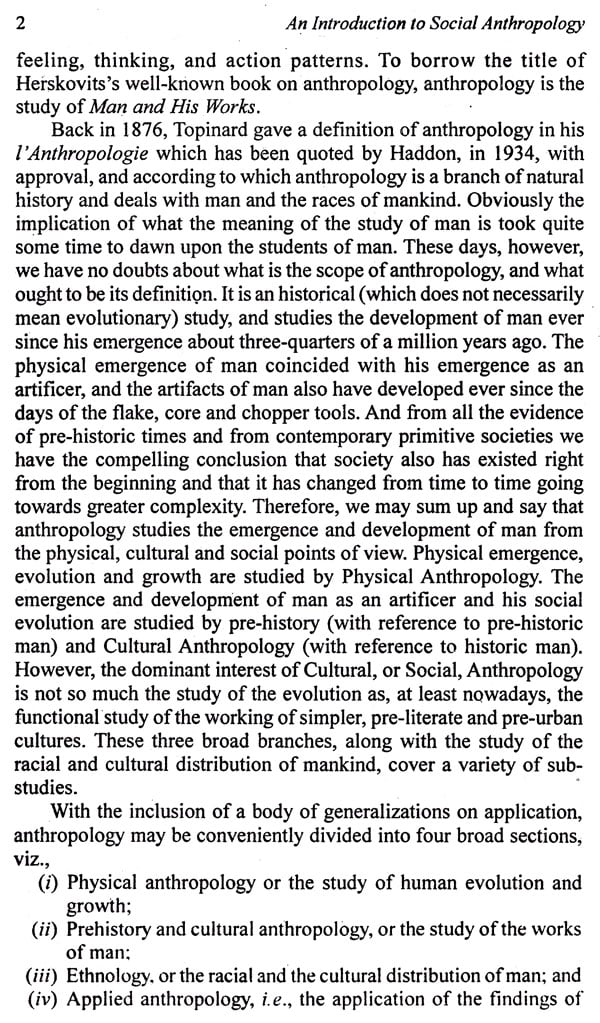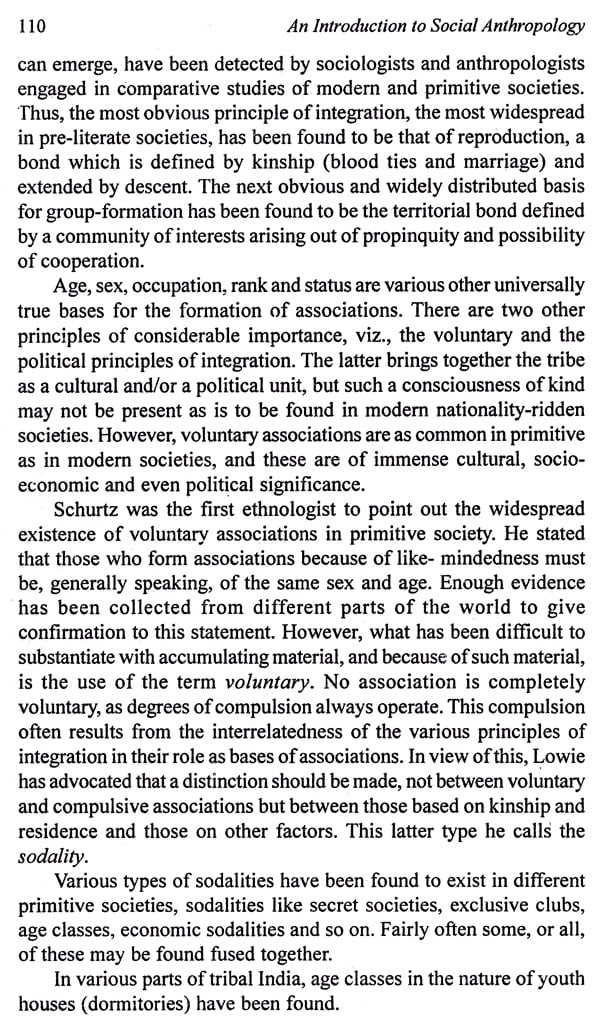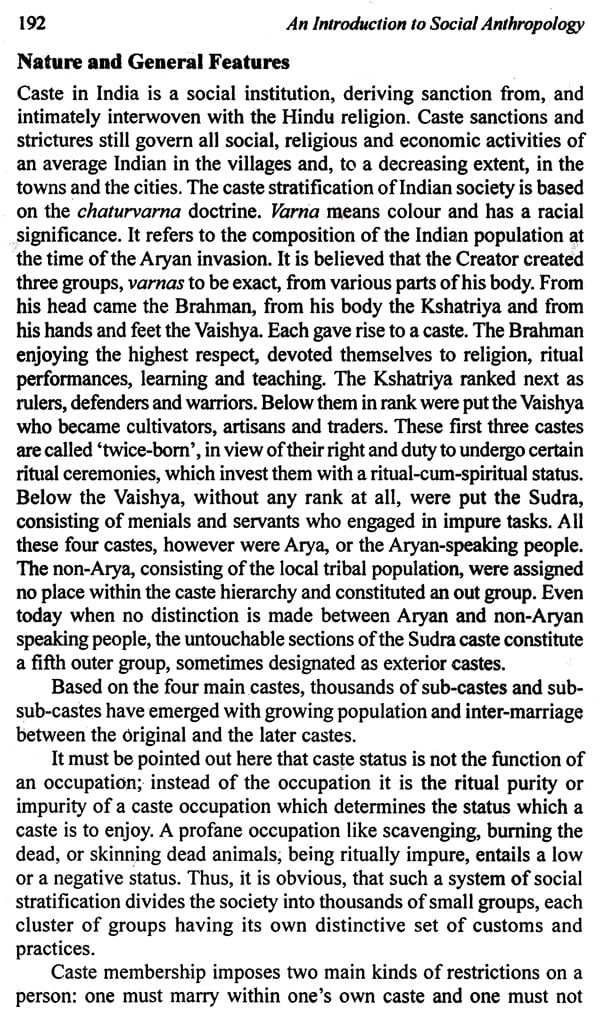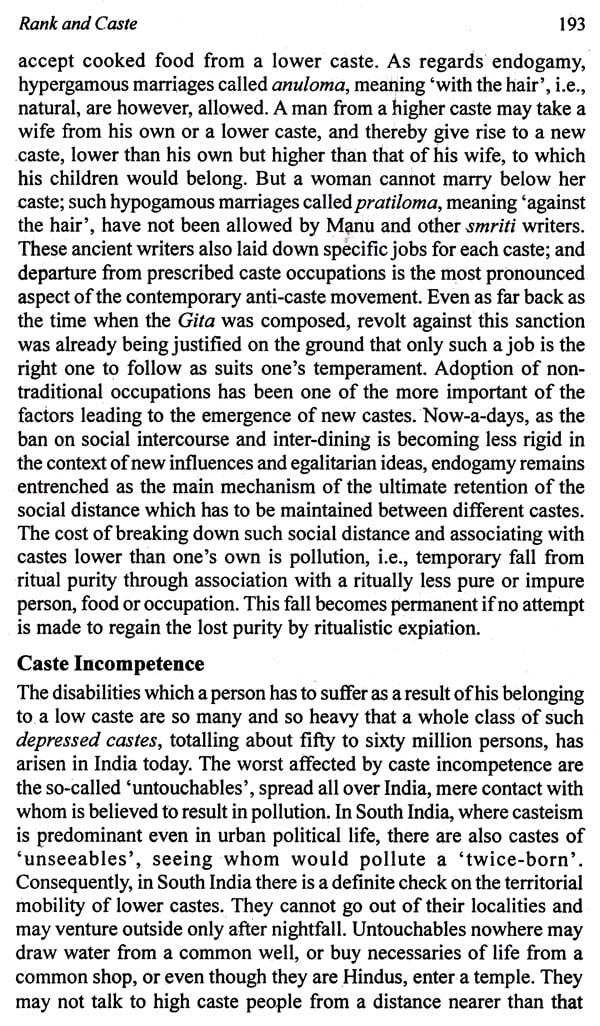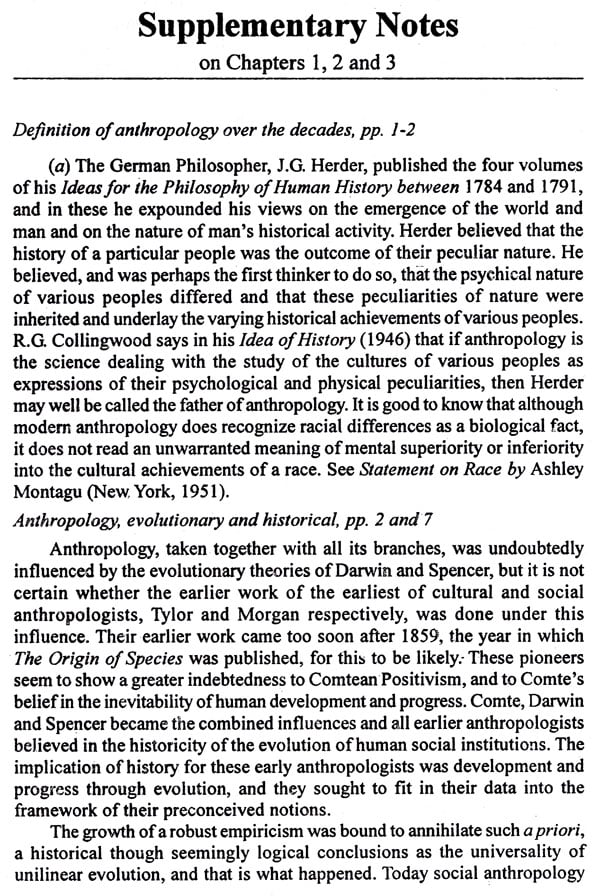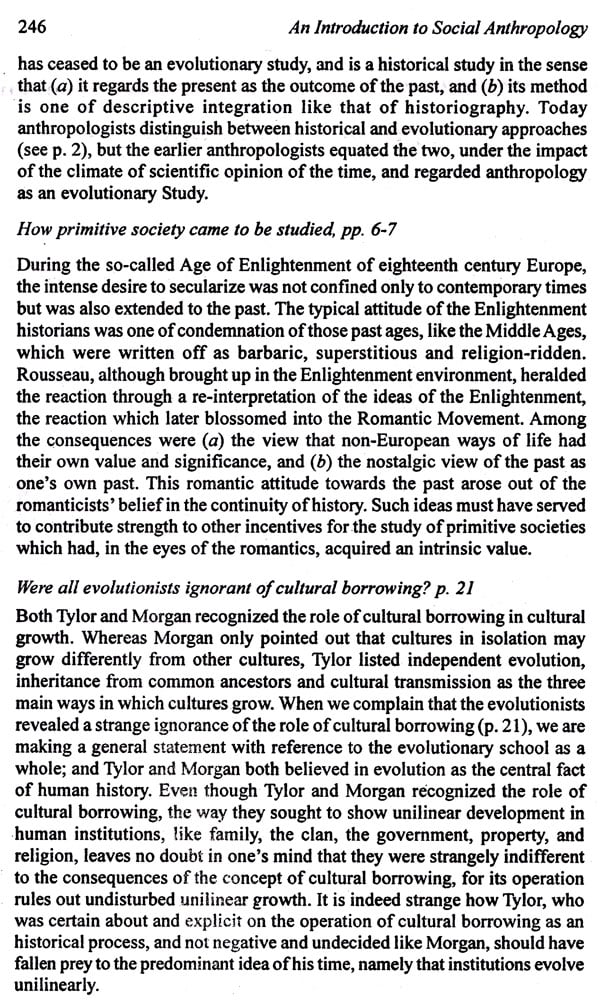
An Introduction to Social Anthropology
Book Specification
| Item Code: | NAT170 |
| Author: | D.N. Majumdar, T.N. Madan |
| Publisher: | Mayur Books, New Delhi |
| Language: | ENGLISH |
| Edition: | 2022 |
| Pages: | 271 |
| Cover: | PAPERBACK |
| Other Details | 8.50 X 5.50 inch |
| Weight | 270 gm |
Book Description
ANTHROPOLOGY, it seems, is fast coming to occupy its due place of importance in India, and this has created difficulties where none were .experienced previously, at least not keenly. Among these difficulties, one of the foremost is the absence of a suitable introductory book which would give the beginner, student and enthusiastic general reader a rounded account of the subject, in, as far as possible, familiar and non-technical language, illustrated by examples drawn mostly from the Indian tribes, and occasionally from elsewhere. Hence this book. No claims to original contributions are made, though we have drawn our materials from original sources including our own. Every attempt has been made to avoid giving disproportionate weightage to the views of any particular school of thought.
It is well and proper to introduce the contents of the book to the reader rather than leave it to him to find out what he will read and why. Anthropology is said to be the science of 'man in his totality'. How do anthropologists study man as such? Before we answer that question it becomes imperative that we explain how anthropology is different from physical sciences, like biology; social sciences, like economics, political science, and sociology; humanities, like history and philosophy; and literature, all of which study man.
Anthropology shares some features with all types of studies referred to above. In the study of man, anthropologists like biologists, study human morphology and in the study of human behaviour they use concepts (i.e., abstract ideas or general notions) like 'function' and `structure' borrowing the same from physical sciences. With social sciences anthropology shares an interest in the study of the social behaviour of man (i.e., the behaviour of man as a person, a member of society) in its institutionalized (i.e., socially sanctioned) forms. It is not individual, but enduring, repetitive and socially significant behaviour of persons that forms the subject matter of anthropology. And along with the philosopher and the like, the anthropologist tries to study the nature of human nature and the nature of human culture. 'Culture' stands for the sum total of human behaviour, verbal and non-verbal, and its products, material and non-material.
What, however, distinguishes anthropology from the other sciences is that:
(i) Unlike the physical and social sciences and philosophy, anthropology has no fixed boundaries, nor any exclusive interests, because it does not study some particular aspect of man or human activity (like, say, his morphology as biology does, or his economic activity as economics does, or his speculations as philosophy does) but man and his social activities in their totality. The approach of anthropology to the study of man is holistic; it studies man, society and culture as a dynamic inter- acting whole.
(ii) Its method of approach is microcosmic and inductive. By the microcosmic method is meant the attempt to study the smaller unit of a class, or category, to throw light on the bigger unit. Anthropologists study the pre-literate, pre-urban, primitive or rural societies in order to understand human society. So it is the understanding about the smaller unit which leads to the understanding of the more complex bigger unit. And the knowledge and understanding about the smaller unit (pre-literate, pre-urban societies in the present case) are gained inductively. That is, facts are collected, classified, and compared to yield generalizations; they are not fitted into a preconceived set of-notions.
(iii) As it should be already clear, anthropology is different from the other sciences, physical and social, and from philosophy, in so far as its investigations are carried out directly (not on the basis of documentary and allied evidence) in pre-literate societies only.
We may now answer the question, 'How exactly does anthropology study man in all aspects?'
Anthropology being committed to the scientific inductive method has to base itself on perceived facts. Man is manifest in two ways. Firstly, we see him as a 'functioning structure', i.e., as an arrangement of bones, muscles and vital organs.
How did man acquire this present bodily form? How is he related to higher mammals? How does one group of men 'differ from another in bodily form? How do the bodily forms and mental capacities of parents affect children? And so on. These are the problems studied by physical anthropology.
Secondly, man is manifest through his behaviour-verbal and nonverbal. This behaviour is either perceptible by itself and by its results or by its results alone.
The institutionalized behaviour of man falls into four categories. They are:
(i) Man is subject to bio-psychic needs which have to be satisfied, needs like the satisfaction of hunger and sexual desire, the need for emotional response and so on. These needs constitute human nature and are deterministic, i.e., if not satisfied they result in the extinction of the body, or in its cessation as a normally functioning entity. Consequently, man must effect an adjustment with his own nature. This he does through exploiting nature-wresting food, clothing and shelter from it. The sum total of such activities constitutes the economic organization of a group. It is the man-to-nature adjustment for man's ultimate adjustment with his own nature.
(ii) The limited nature of man's physical endowments has been already referred to: in order that he may engage in effective relations with nature he must organize group effort. Group effort presupposes mutual understanding and response. It has t..) be based on an apprehension of common aims and methods and the ability to communicate with each other. Man has invented various devices to establish groups. Language and education are the prerequisites which lead to the emergence of social life. The family, marriage and such other social institutions provide the medium in which and through which social life exists. And political institutions supply the controlling factors which hold social life at the useful level of inter-action.
The sum total of all these activities, which have for their purpose the establishment of groups, is social organization. It is the man-to-man adjustment, for the sake of adjusting with human nature through (a) supplying the satisfaction of needs like the desire for sex gratification and emotional response, and (b) making possible the effective exploitation of nature.
(iii) The extent of the knowledge about the immediate world or even human life being limited in all pre-literate societies, pre- literate man has always, ever since the beginning of his career as Homo sapiens, man the wise, felt the unseen presence of super- natural powers which could explain the sun, the moon, and the stars, thunder and earthquake, disease and death, fire and floods, child-birth, flowering of plants, and the bearing of fruits by trees. The vigour and ruthlessness of this/these unseen supernatural power/powers as also its/their benevolence struck the mind of man, and he sought to establish fruitful relations with it them. He came to have beliefs about it/them, and evolved special modes of behaviour, called rituals, towards it/them. The sum total of such mythical beliefs and rituals constitutes the. magico-religious organization of a people.
(iv) Man is not impelled to act only by his bio-psychic drives and his need to organize in groups to establish fruitful relations with nature and by his apprehension of supernatural powers, but also sometimes by cravings to produce things of art and give expression to commonly or individually cherished notions of beauty. Such activities in society are the aesthetic activities of its members. Not only those who create art but also those who appreciate and accept or reject art products partake in the aesthetic activities of a society. Aesthetic activity is the human attempt at adjustment to what may be called cravings of the human mind for Beauty.
Such are the main types of institutional behaviour found in a human society; and these four types of behaviour, as reported from contemporary pre-literate and pre-urban societies, are studied by social-cultural anthropology.
So far as pre-historic societies, societies of more than 5,000, unto nearly 550,000 years ago, are concerned, the pie-historian can neither observe them, nor read about them. He can only examine such of their artifacts (i.e., objects of nature, like stone, wood, bone, ivory, animal horn and so on, refashioned by the hands of man for use in everyday life) as have not perished, and try to reconstruct from such study some account about the types of action-thinking and feeling-patterns, the economic, social, ritual and aesthetic activities, that might have been characteristic of these ancient pre-historic societies.
The Supplementary Notes at the end of the book are meant to clarify some points covered by inevitably general statements in the first three chapters of the book. Separate Indexes are given for authors, names of tribes used in illustrative material, and the various topics covered by the book. Every attempt has been made to make them comprehensive and hence there is no glossary. Suggestions for further .reading are given, to the beginner, at the end of each chapter so far as theoretical reading is concerned, and at the end of the book for monographic reading.
**Contents and Sample Pages**
